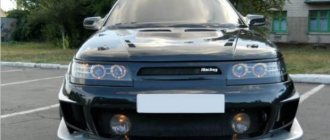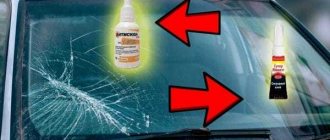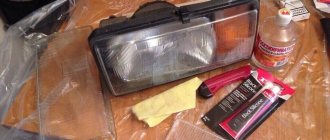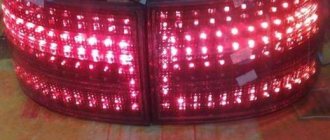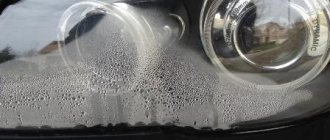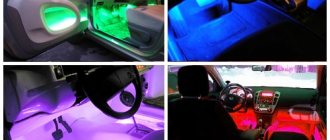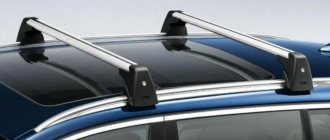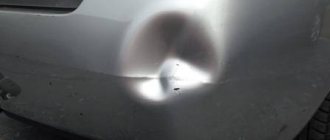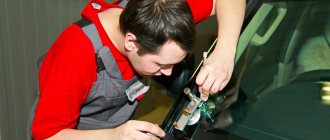There are dozens of brands of thermosealants on the automotive market, and choosing the best option among them is a rather difficult task and takes a lot of time. So, the sealant for headlights should be highly adhesive. Its use should be as comfortable as possible for the car enthusiast. In addition, such material should harden perfectly in the shortest possible time. When repairing headlights, the abrasive should be slightly dense and not spread randomly. It is advisable that it does not stain your hands and auto parts, and does not leave condensation on the wall of the headlight.
- What kind of sealant to glue headlights to: let’s understand the types
- Professional headlight sealant by category
- Which sealant is best for headlights
- Choosing a brand of thermosealant
- Sealant for car headlights: basic rules of use
- How can I remove the sealant?
- Results
If you don’t know which car sealant to buy, we recommend following the advice in the article. We are ready to give several universal recommendations that will allow you to make the right decision in choosing a sealant for glass headlights. You should pay attention to all the nuances. In addition, we will look at the advantages and disadvantages of the most popular brands, as well as provide valuable instructions on the use and removal of auto glass sealant.
Types of sealants
Special sealing compounds for headlights have a very specific purpose. They are used for minor repairs and installation of automotive optics made of transparent plastic or glass in order to obtain the most airtight connection.
Waterproof sealants perform the following tasks:
- prevent the penetration of water, air and dirt into the device;
- eliminate the appearance of condensation and a decrease in the quality of lighting;
- minimize the risk of damage to the diffuser and other metal elements;
- ensure strong joining of parts without the risk of peeling off.
In car stores, sealant for gluing headlight glasses is a popular product, because optics often fail and are the first to deteriorate during accidents. Most of these products are suitable not only for materials for making headlights: sealants perfectly glue wood, leather, fabrics, ceramics, and many are used for metal.
Sealing agents can have different compositions, but most of them are sold in finished form and are single-component.
Silicone sealants
Products containing silicone are widely used in the installation of headlights, lanterns, and car windows. They are created on the basis of rubber and its subtypes (siloxanes, fluorosiloxanes and others), and represent a transparent elastic mass. Silicone sealants also contain vulcanizers, which impart strength and elasticity like rubber, ensuring no damage when in contact with water.
Typically, silicone compounds are used to seal cracks up to 6 mm deep or glue various parts together to seal joints. They help eliminate minor defects and unevenness of the base, easily withstand heating up to +250 degrees and above (products with the addition of copper - up to +375 degrees), and do not deteriorate from temperature changes. The big disadvantage of silicone is its poor tolerance to petrochemicals and a number of other substances that are used in cars . Therefore, silicone sealants can be used where there is no contact with such liquids.
Polyurethane compounds
Products with polymers based on urethane groups are considered the most popular for the repair and installation of optics. Car enthusiasts prefer them for their versatility, because sealants are excellent for gluing and protecting many body and working parts of a car. Their properties are:
- high degree of adhesion with most known materials - plastic, glass, ceramics, rubber, wood, metal;
- excellent moisture resistance, air tightness;
- work in a wide temperature range, tolerance of changes from -60 to +80 degrees or more;
- long service life (up to 25 years);
- resistance to petrochemicals, weak acids, alkalis, other aggressive substances, as well as microbes, fungi, mold;
- uniform filling of even small cracks and seams, the ability to glue optics of any geometry;
- no shrinkage after polymerization.
Polyurethane compounds, after hardening, have slightly less elasticity than silicone ones. Because of this hardness, they are not recommended for use on connections subject to strong vibration, although they are good for headlights. Also, sealants are not suitable for installing dismountable joints: they are so strong that removing them will be problematic.
Sealants contain toxic solvents, so safety precautions must be strictly observed when applying and drying. With prolonged exposure to temperatures above +100...+120 degrees, the sealant layer is destroyed, which must be taken into account during operation.
Anaerobic compounds
Such products harden only when contact with oxygen ceases, maintaining their plasticity in air. They can be slowly applied to the parts and pressed tightly together, which is convenient for the craftsman. But in a vacuum, the process of rapid polymerization begins, as a result of which a strong seam is formed in a couple of minutes. Anaerobic sealants do not deteriorate at temperatures ranging from -80...+175 degrees, and are resistant to:
- fuel;
- oils;
- antifreeze;
- alkalis;
- weak acids.
The products create a reliable cushioning layer and help mount optics, front and rear windows, as well as seal body joints, threaded connections, and flanges. After hardening, a hard, durable plastic is formed at the site where the composition is applied, which lasts a long time, does not deform, does not shrink or expand. The ease of use is beyond doubt - there is no need for quick application, no physical effort for gluing, safety for humans and the environment.
Heat-resistant sealants
These compounds are characterized by increased strength and lack of reaction to high temperatures (usually up to +375 degrees). They are rarely used for repairing and installing headlights, because such connections are not subject to thermal stress. The finished seam is not afraid of shocks, shocks, vibrations, water and aggressive substances. The disadvantages of heat-resistant sealants are increased cost and long polymerization (8-12 hours until completely dry).
Specifications
| Parameter | Value/Units |
| Physical type | solid |
| Color | Black |
| Smell | Oil |
| Flash point | 163 °C |
| Flammability | Not self-igniting |
| Explosion hazard | Not explosive |
| Relative density (at 20 °C) | 1.4 g/cm3 |
| Solubility | Insoluble |
| Organic solvent content | <2 % |
| Solid content | 98,8 % |
Rating of the best sealants
To work with automotive optics, you need to purchase high-quality products so as not to experience problems with the functioning of lighting devices.
ABRO WS 904
ABRO WS 904 sealant is one of the most popular according to user requests. It is sold in the form of adhesive tape in rolls of different sizes, made on the basis of vulcanized polyisobutylene, a derivative of artificial rubber.
This butyl headlight sealant is highly elastic and easy to use - you just need to cut a piece of tape of the required size, stretch it and stick it to the surface. It only takes a few seconds to connect the ends of the tape to each other - the polymerization process occurs quickly. At low ambient temperatures, it is recommended to additionally heat the sealant with a hair dryer.
The advantages of ABRO WS 904 tape are as follows:
- low consumption - the packaging is enough to completely seal a set of headlights;
- ease of installation - the tape does not stick to your hands, is pliable, can be easily cut, and stretches to achieve the desired thickness without effort;
- high degree of adhesion to most materials;
- absence of toxic emissions and unpleasant odor;
- strength, long service life after hardening, reliability and complete tightness of the seams.
Dow Corning 7091
It is recommended to purchase this sealant when working with dissimilar materials that have unequal coefficients of thermal expansion. It is capable of creating high-quality joints at the junctions of glass and metal, glass and plastic, and metal and plastic, so it is perfect for installing and repairing automotive optics.
Dow Corning 7091 Silicone Sealant is a one-pack, ready-to-use product that is both durable and flexible. The sealant is suitable not only for working with car headlights, but also for installing LED lamps, various electronic devices and complex mechanisms. After polymerization, the formed seam will reliably seal the joint, while it is not destroyed by temperature changes and can be used at -55...+185 degrees. The sealant is easy to further process, if required, and is a good dielectric.
DoneDeal DD6870
The composition of DoneDeal DD6870 refers to polyurethane sealants, includes urethane groups, petroleum products, various polymers, adhesion enhancers and other additives.
It can be used for installation and sealing purposes:
- headlights;
- glass;
- lanterns;
- lamps;
- hatches;
- instead of gaskets.
The sealant dries completely within 15–30 minutes after application, has high strength seams, good adhesion to most materials, and does not crack under the influence of vibration or shock. The product is characterized by moisture resistance and works without loss of properties in the temperature range from -60 to +270 degrees.
3M PU 590
3M PU 590 sealant is produced in the USA, has a polyurethane base, and is packaged in convenient tubes of 300–600 g. It does not tolerate high temperatures (withstands up to +100 degrees), so it is not used on hot car components. The product polymerizes quickly (in 25–30 minutes), does not react to acids, alkalis, solvents, is resistant to moisture and UV radiation, and reliably connects even dissimilar materials. Once cured, the sealed joint can be painted over with most automotive paints.
Emfimastic PB
This brand of adhesive-sealant is produced in France and contains polyurethane groups and various improving additives. Ethermastic glues homogeneous and dissimilar materials as reliably as possible, ideal for installation and repair of automotive optics. The composition is odorless, hardens in half an hour, does not shrink, and does not crack over time. It is not harmful to humans, has no unpleasant odor, and can be used even indoors. To apply this flexible sealant you will need a hand or air gun.
Silicone compounds
Silicone sealants are extremely popular on the market. These are viscous products characterized by fluidity. They are made from a natural or synthetic rubber compound and, after drying, become a kind of transparent rubber.
Silicone sealant is used for gluing headlight glasses and urgent repairs, but it has a main drawback: it can be destroyed by exposure to gasoline, diesel, car oil or alcohol. The latter is very important to take into account for owners of modern cars equipped with headlight washers. The composition of winter “anti-freeze” necessarily includes alcohol, which can reduce all repair work carried out using silicone sealant to zero.
Instructions for use
Before using any product, regardless of its shape and type, the surface must be carefully prepared. The headlight and base are cleaned of dirt and old sealant (if any), degreased, while working carefully so as not to damage the lens. Then apply the product in a thin layer, following the instructions:
- liquid formulations are distributed using a dispenser;
- paste-like products are squeezed out using a glue gun;
- The tapes are cut and glued by hand.
If the sealant is not anaerobic, the parts must be pressed well together. When the room is cold, it is recommended to warm up the seam and glued elements with a hair dryer. Afterwards you need to wait until it dries completely (usually no more than 30 minutes).
How to properly replace glass on a headlight
There are only two methods, one of which involves quick dismantling of the auto glass and replacement, the second will require complete disassembly of the headlight unit. The use of one or another method depends on the tasks facing the motorist and the degree of glass damage (example on a VAZ 2107):
- Remove the radiator grille.
- Unscrew the bumper mounting bolts and remove it.
- Find the 3 bolts holding the headlight unit and remove them.
- Recess the headlight into the engine compartment.
- Take the eyelash and pull the block towards the center of the car.
- Using a screwdriver, pry up the eyelashes, then remove the headlight, freeing it from the bumper.
- Unscrew the lower fastening nut.
- Disconnect the connectors.
- Pull out the headlight.
Removed headlight 2107
Then you can remove the glass, check the rubber gasket and clean it. If it is torn, buy a new one. Assembly is carried out in reverse order. Assembly will be faster if you hook the headlight brackets to its housing, then lightly press and snap into place. Reinstall the glass in the opposite order.
Removing old sealant
Most often, when installing a new headlight, particles of the previous sealing compound are present on the base. Removing it can be a problem, especially if the product is polyurethane based. You must work carefully so as not to scratch the base or damage important elements. There are several ways to remove sealant:
- heat the dried composition with a hairdryer, and after softening, carefully remove it (it is important not to melt the plastic on the optic covers);
- scrape off particles of sealant with a sharp knife or a flat-blade screwdriver;
- wipe with solvent.
When installing headlights, it is better to use proven, reliable sealants and strictly follow the instructions for their use - in this case, the optics will last a long time and will not cause problems on the road.
What else to look for when choosing a product
When buying headlight sealant, in addition to its composition, as described above, it is necessary to take into account other criteria:
- Vibration resistance. When driving, the headlights shake and the sealant should not burst on the first bump.
- “Tolerance” to high temperatures: if you have halogen optics, choose an appropriate sealant.
- The volume of one package should be enough to repair at least one headlight.
- Removing excess. Particles of the product should be easily removed from any surface - metal or glass.
- Transparency. This point is important when repairing cracks in glass. If the product interferes with the emission of light, the efficiency of the headlight will be low, so a colorless composition is needed.
- Brand. Expensive does not mean good. However, cheap products will not provide reliable sealing, and the procedure will have to be repeated again and again, which is fraught with unnecessary financial expenses.
Anaerobic compounds
Anaerobic sealants are used to repair the smallest defects in headlights. They will help to glue the glass of the front and rear optics even with the smallest cracks, between which there is almost no air layer. They are also used for sealing joints and seams. Suitable for headlights with heating temperatures up to +200 degrees.
Anaerobic sealants are liquid and completely harmless. Due to this, they are often used not only for repairing car optics, but also in everyday life, if necessary, for example, to glue together fragments of a vase and other fragile objects. However, it is best to avoid getting the product in your eyes and mouth, so keep it away from children.
Many experts recommend using anaerobic sealants if it is necessary to seal headlights.

